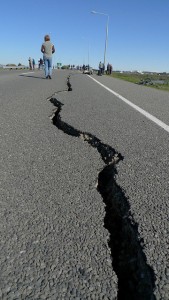
This report shares learning from the Realising the Value programme and plans for the next phase. Realising the Value is led by the Health Foundation and Nesta, both of whom have worked to encourage greater engagement, involvement and coproduction with local communities and individual patients, through initiatives such as People Powered Health and the MAGIC programmes.
The Realising the Value programme was set up following the Five Year Forward View (5YFV), to drive forward the stated aim of new partnerships with local communities to transform healthcare. The theory behind this closer working is the potential to improve health and wellbeing, sustainability of local services and address inequalities. However, it could be argued that we don’t know enough about what works (or doesn’t work) in what contexts, why and how. Recognising this underdeveloped evidence base, Realising the Value aims to develop practice-based evidence and create resources to support local implementation.
Recognising current system constraints, the authors suggest that tapping into the “renewable energy of individuals, social networks and communities” is important for the design and delivery of local transformation. Current approaches have evolved separately within healthcare, social care and community development (these are likened to tributaries) emphasising the need to actively converge these to create an integrated approach. A key role for commissioners will be in removing barriers to integrated working, through collaborative relationships, co-producing strategies and plans and recognising the contribution of individuals and community groups.

Separate approaches have developed within health, social care and community development and now need to be actively integrated.
Methods
The report is based on learning from practice and references earlier analysis of the evidence base. It notes that evidence is emerging and can be confusing as findings are mixed or conflicting; this suggests a need for deeper understanding of the contexts in which approaches are developed to offer ideas about how and why ideas might work for certain communities. The report does recommend more focused research and evaluation on this, as well as on appropriate metrics and outcomes; and system levers which can help or hinder transformation. Some of these factors will be addressed by local vanguard evaluations but it’s not clear yet how this learning is being shared. The appendix points to some useful resources for a number of approaches and enablers, with examples.
Findings
The report describes approaches to patient and community centred care as a “mosaic” of different approaches (e.g. health coaching; community hubs; time-banking; and asset-based approaches), combined in response to local need and context. The general hypothesis is that individual patients are supported to better manage their health and wellbeing and that community resilience in turn contributes to improved social outcomes and reduced inequalities. The report doesn’t go into detail on the evidence behind the hypotheses; it would be useful to understand how these approaches are associated with reduced demand, increased self confidence and improved social outcomes and if in fact, these changes are sustained over time.

The report likens current patient and community centred approaches to mosaics of different interventions and services.
Realising the Value is being taken forward with 5 sites, each focusing on a particular intervention:
- Peer support: Learning from earlier work suggests there are some key challenges to address in implementation, including: training, supervision and management; understanding what volunteers are able to provide; how peer supporters are themselves supported. Realising the Value will be working with Positively UK, a programme to support people living with HIV, to develop learning in this area.
- Self management and education: Critical success factors seem to include: integration of programmes; flexibility to respond to diverse needs; opportunities for social interaction; and staff training. Realising the Value will be working with Penny Brohn UK which provides day and residential courses for patients living with cancer.
- Health coaching: Practical considerations include: training and development for coaches and the local configuration (e.g. one to one or group coaching). Realising the Value will be working with Big Life Centres which offers coaching to support behaviour change.
- Group activities to support health and wellbeing: Access is particularly important particularly as individuals may be isolated and a number of different mechanisms are used to engage people. Realising the Value is working with Creative Minds which offers group based activities to support patients to “live well within their communities”.
- Asset-based approaches: Approaches include activities which directly support health and wellbeing, such as time-banks to support older people to live independently; as well as those that have a more generic focus, such as supporting small scale enterprise. Realising the Value is working with Unlimited Potential which brings together a range of services within Salford.
There’s a helpful table in the report summarising the evidence on these five approaches, showing what’s currently available in relation to improving health and wellbeing, sustainability and social outcomes. The programme will develop a set of resources and tools, an economic model and a number of communities of interest, which will be available this Autumn.
Commentary
Commissioners will find the learning here relevant and useful; the planned translation of this learning into useable resources and tools will undoubtedly be helpful. It’s clear that there’ll be some useful practical evidence from this and other work derived from the 5YFV. What isn’t so clear though, is how this will be connected in a useful and meaningful way. There’s a risk that the evidence base for transformation is becoming more fragmented.
In relation to community mobilisation, commissioners might want to think about:
- Where are the local sources of “renewable energy”? How are you working with patient and community groups and how can this be built-on to co-design and co-deliver change?
- How would you describe your approach to patient and community centred care? What are the components and how are these aligned?
- How are the outcomes and impact of your approach being measured and evaluated? How are they perceived by staff, patients and communities?
Links
Primary paper
Realising the Value (2016) At the heart of health: realising the value of people and communities. Health Foundation and Nesta.
Photo credits
- Alan Levine CC-CY-2.0
- US Fish and Wildlife Service (public domain)
- MelSi CC0
- Martin Luff CC-BY-SA 2.0
- Plenz CC-BY-2.5



Morning @HealthFdn @nesta_uk We’ve blogged about your “At the heart of health” report https://t.co/NCIXDCqe8G @ali_pals
@CommissionElf @HealthFdn @ali_pals thanks – we’ve shared with our health team here.
@CommissionElf @HealthFdn @nesta_uk @ali_pals Thanks for the blog and thoughtful commentary & analysis.
How can we mobilise communities to transform healthcare? @HealthFdn @nesta_uk have some ideas https://t.co/NCIXDCqe8G
Thoughtful review & response to an earlier #RealisingTheValue report at @CommissionElf https://t.co/m2U822KrSx
People, community and healthcare transformation https://t.co/CbCbyTBKo6 via @sharethis find your local renewable assets is apparently key
Don’t miss: People, community & healthcare transformation https://t.co/NCIXDCqe8G #EBP #RealisingTheValue report from @HealthFdn @nesta_uk
People, community and healthcare transformation https://t.co/SX10WAER9p